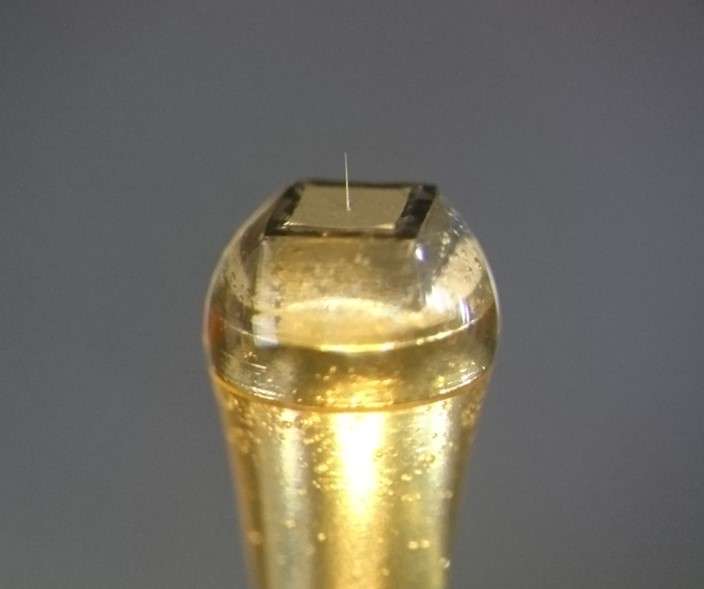Can the brain feel it? The world's smallest extracellular needle-electrodes

A research team in the Department of Electrical and Electronic Information Engineering and the Electronics-Inspired Interdisciplinary Research Institute (EIIRIS) at Toyohashi University of Technology developed 5-μm-diameter needle-electrodes on 1 mm × 1 mm block modules. This tiny needle may help solve the mysteries of the brain and facilitate the development of a brain-machine interface. The research results were reported in Scientific Reports on Oct 25, 2016.
The neuron networks in the human brain are extremely complex. Microfabricated silicon needle-electrode devices were expected to be an innovation that would be able to record and analyze the electrical activities of the microscale neuronal circuits in the brain.
However, smaller needle technologies (e.g., needle diameter < 10 μm) are necessary to reduce damage to brain tissue. In addition to the needle geometry, the device substrate should be minimized not only to reduce the total amount of damage to tissue but also to enhance the accessibility of the electrode in the brain. Thus, these electrode technologies will realize new experimental neurophysiological concepts.
A research team in the Department of Electrical and Electronic Information Engineering and the EIIRIS at Toyohashi University of Technology developed 5-μm-diameter needle-electrodes on 1 mm × 1 mm block modules.
The individual microneedles are fabricated on the block modules, which are small enough to use in the narrow spaces present in brain tissue; as demonstrated in the recording using mouse cerebrum cortices. In addition, the block module remarkably improves the design variability in the packaging, offering numerous in vivo recording applications.
"We demonstrated the high design variability in the packaging of our electrode device, and in vivo neuronal recordings were performed by simply placing the device on a mouse's brain. We were very surprised that high quality signals of a single unit were stably recorded over a long period using the 5-μm-diameter needle," explained the first author, Assistant Professor Hirohito Sawahata, and co-author, researcher Shota Yamagiwa.
The leader of the research team, Associate Professor Takeshi Kawano said: "Our silicon needle technology offers low invasive neuronal recordings and provides novel methodologies for electrophysiology; therefore, it has the potential to enhance experimental neuroscience." He added, "We expect the development of applications to solve the mysteries of the brain and the development of brain-machine interfaces."
More information: H. Sawahata et al, Single 5 μm diameter needle electrode block modules for unit recordings in vivo, Scientific Reports (2016). DOI: 10.1038/SREP35806

















